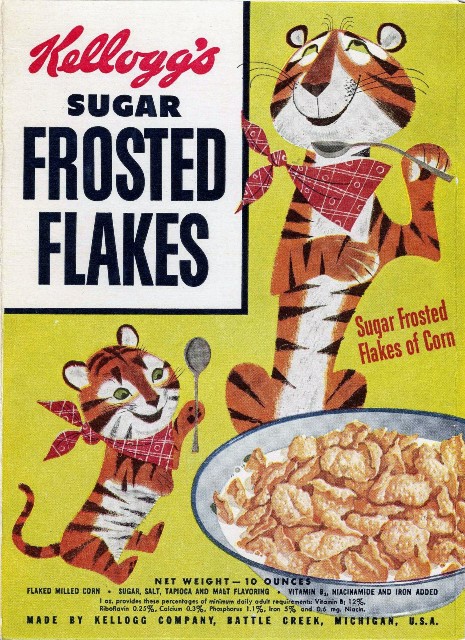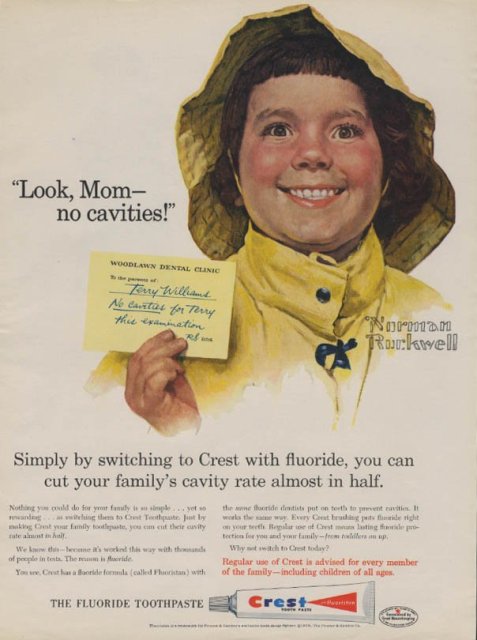(This post contains affiliate links. If you click through and make a purchase, we will earn a commission, at no additional cost to you. Commissions help keep Moving Mountains Daily up and running. Read our full disclosure here.)
Just when I thought Andrew was old enough to brush his teeth with minimal supervision, I discovered that he was eating the toothpaste, not brushing with it. Score one point for Prader-Willi syndrome. Today’s my not-so-gentle-reminder to Andrew about not eating toothpaste, led to a mouthy kid (no pun intended). For shock treatment I read the warning label to Andrew:
“Do not use if irritation occurs or persists. Keep out of reach of children under 6 years of age. If more than used for brushing is accidentally swallowed, get medical help or contact a Poison Control Center right away…… Directions: do not swallow. Supervise children until capable of using without supervision. Rinse away all residue thoroughly. Active ingredient Sodium fluoride”
I launch into my ‘teaching moment’. “Andrew. You should use this much toothpaste (pea size dollop) and then brush. Don’t eat it because it is poisonous. If you ingest too much it could kill you.” My teaching moment didn’t stop there. I helped him brush for several minutes with continual directions.
Shock Treatment Backfired
While my mouth was saying one thing the common-sense part of my brain (yes, dear, I do have one) was screaming, “ARE YOU STUPID!!??!!? You just put something in your kid’s mouth that has directions to contact poison control?!!? What is in toothpaste anyway?”
Later, when I should have been sleeping, the questions began:
- Why would we brush with a poison that has to be thoroughly rinsed out?
- What is in toothpaste that makes it dangerous enough to call poison control?
- How many of our special needs kids eat toothpaste because of their syndrome, such as Prader-Willi syndrome?
- Is it just the fluoride that’s dangerous or something else?
- How many adults don’t thoroughly rinse ‘all’ the toothpaste residue off their teeth?
- How many adults put toothpaste on their finger before a meeting and rub their teeth for a minty-fresh feeling?
History of Fluoride
Here are just a few facts about the history of toothpaste and how fluoride came to be in your toothpaste:
- Proctor and Gamble led research at Indiana University (Bloomington) in the 1950s to explore Stannous fluoride explicitly for the prevention of cavities.
- This research led to the invention of Crest toothpaste and to the slogan “Look Mom! No cavities!” The campaign to sell Crest and its cavity preventing fluoride went nationwide. (Video below)
- When the American Dental Association jumped on board and supported the new toothpaste with fluoride, the push to market other products began. The new fluoridated water and juice products flooded grocery store shelves.
- In the 1960s, the American public felt secure when they could see that the scientists and dentists were in agreement about the beneficial properties of fluoride. Soon parents jumped on the fluoride-bandwagon and made Crest, the #1 bestselling toothpaste.
- In 1987, scientists invented an edible toothpaste that allowed astronauts to brush their teeth in space. Today we know it as training toothpaste for children.
After reading the history of Crest, I realized that I have some amazing memories from the introduction of fluoridated toothpaste.
My Personal Memory
I was a kid in the 1960s and I remember my mom taking me down to the local community center on afternoon for a fluoride treatment. Every child who blessed to have loving parents was in line. We sat in recliners while these gigantic plate thingys that were filled with fluoride, were inserted into our mouths. We had to sit drooling with our mouths gaping open for hours. My childish recollection remembers hours – it was probably more like minutes. Either way, it was traumatizing.
Cavity Fighting Propaganda
I might have been young but the sudden bombardment of cavity fighting propaganda has never been forgotten. Seriously, this was more than just advertising. The information placed in front of us was to change our thought process and the American culture, not just sell us a product.
There were continual ads on TV pushing Crest and good brushing habits. Proctor and Gamble hired Norman Rockwell to create brightly colored posters with toothy-grin children that advertised Crest as a new cavity fighting intervention. These posters covered classroom walls and hallways at school. I especially, remember an ad with a kid in a yellow rain slicker.
Brushing Encouragement
I have a baffling memory of a brush-your-teeth-daily promotion in my third grade classroom. The teacher posted a calendar that pictured Tony the Tiger eating Sugar Frosted Flakes. Students who brushed their teeth at night and in the morning received check marks daily. The students that didn’t miss a day of brushing during the promotion month would receive a free box of Kellogg’s Sugar Frosted Flakes to take home. Note: The Kellogg Cereal Company dropped the word “sugar” from from the title Sugar Frosted Flakes in the 1980s era.
At the end of the promotion almost all students went home with a box of Sugar Frosted Flakes. I received an honorary mention because I managed to still brush my teeth even during the week that I was sick. My teacher gave me the classroom poster and all the promotional materials as well as my well-deserved box of Sugar Frosted Flakes.
The problem with this type of encouragement is that it only promotes lying, all for the sake of a box of sugary cereal and of course, winning. I recall feeling ecstatic when I received the bonus prize. I don’t remember feeling bad about lying and saying that I had brushed my teeth when I hadn’t.

The Junk Food Era
While we are all snorting that a sugary cereal was the ultimate promotional award one has to realize that the junk food era had also exploded in the 1960s. The American public wholeheartedly embraced drive thru windows, car window food service, and instant food. Sugar cereals were the rave for breakfast and better yet, they were fortified with vitamins that were good for us. Grocery stores stocked shelves with new products like Fruit Loops, Frosted Mini Wheat, Cap’n Crunch, Pop-Tarts, Lucky Charms, Tang, Yo-plait, instant oatmeal, and Jell-O just to name a few.
Natural Calcium Fluoride
What is in toothpaste and why is a warning label required?
First, there is a natural and a synthetic fluoride. The natural fluoride, known as Calcium fluoride is found naturally on earth – even within water resources. The concentration of Calcium Fluoride is different in geographical areas. Some more and some less dependent upon the abundance. The mineral naturally seeps into the water table. Ingesting calcium fluoride through the water table is not an issue.
Calcium fluorides are found in their natural states on planet earth as gases, liquids, or solids. Calcium fluoride (not to be confused with man made sodium fluoride) is found naturally in water supplies. The concentration of Calcium Fluoride is different in geographical areas. Some more and some less dependent upon the abundance. The mineral naturally seeps into the water table. Ingesting calcium fluoride through the water table is not an issue.
Synthetic Sodium Fluoride
The issue with toothpaste is that Sodium Fluoride is a synthetic man-made version. Sodium Fluoride is a chemical that is more toxic than lead and a little less toxic than arsenic. It is poisonous and is used in pesticides, including fungicides and insecticides, adhesives and glues, steel and aluminum products, glass frosting and wood preserves. The concentration in these products is substantially more than toothpaste amounts. Yet even with the ‘small amount’ added to our toothpaste it is recommended that we brush with a pea size amount of paste, allow no ingestion, and rinse thoroughly. To ingest a tube of toothpaste could lead to death. Thus, the warning and poison labels on our toothpaste tubes.
Neurotoxin Poisoning
When Sodium Fluoride is ingested it becomes a neurotoxin poisoning the nervous system and messing with the normal function of nerve cells. The nervous system is one of the most powerful functions of our body and our five senses, heart, digestion and respiratory systems all depend on it. Sodium Fluoride has been linked to tumors, cancer, thyroid disorders, arthritis, dementia, genetic damage and cell death, infertility, bone fractures, increased lead absorption, muscle disorders, immune system disruptions and that’s only the beginning of the list.
Additional Fluoridated Products
Sodium Fluoride is also added to our water supply and it is found in bottled water as well as products made with water. This includes fruit juices that list ‘water’ as an ingredient. Currently, some communities have already eliminated fluoride from the local water supplies. In other locations, the topic creates a hot battleground between those who feel the water should be fluoridated and those opposing the additive. In addition to warning labels, the American Dental Association recommends that infants to 12 months of age have formula prepared with water that is fluoride-free to reduce the risk of fluorosis – a chronic condition caused by excessive intake of fluoride which causes cracking, staining and pitting of teeth.
What is too much?
I question how we know when we’ve had too much fluoride? There really is no way to know when we have reached the 3 mg daily intake as suggested by the Medicine Food and Nutrition board. Are we being poisoned by the additives to our water and food even if we don’t ingest sodium fluoride found in toothpaste? How many Americans assume the government is making the right decision concerning the water and food we ingest? Different people need different amounts of medicine and vitamins. Since we can’t control the amount of Sodium Fluoride we can assume that children are getting the same amounts of fluoride, maybe more maybe less. There is no way to judge amounts. Should fluoride, like medications be based on body weight?
Canker Sores Caused by Fluoride
To date, my three children have never had a cavity. However, several years ago my oldest, was having mouth issues with multiple canker cores. The dentist suggested a change in toothpaste that had less fluoride than the normal toothpaste. The canker sores left only to return months later. He currently lives overseas now and uses a brown all-natural toothpaste from India which contains no fluoride. He has used this toothpaste for two years and to date has never had a cavity or a canker sore. This alone leads me to ask: If one cuts back on sugars and juices and they brush after meals, can cavities can be reduced or eliminated without the use of poisonous fluoride?
An Individual Choice
This is one of those topics that each family and person must decide for themselves. Promoters and the medical professionals are going to give you all the fluoride positives. The warnings posted on the toothpaste tube make their own statement which can’t be refuted by professionals. Have we been brainwashed into thinking that fluoride is an absolute necessity? Thinking back to my elementary school days and the Crest boom, I do feel like the American public were brainwashed. Everyone believed that synthetic fluoride was going to eliminate cavities. It certainly didn’t work for me. Maybe the junk food boom was the real issue?
Non-Fluoride Toothpaste
I purchased several types of non-fluoride toothpaste this week which created a whole new issue. Andrew’s first statement was, “Oh boy, it’s okay to eat!” <SIGH> I knew this switch wouldn’t be easy although that issue wasn’t on my radar. Silly me. Prader-Willi syndrome strikes again.
The first non-fluoride toothpaste we tried was Jason Sea Fresh Strengthening Paste. The spearmint taste was new to Andrew and he obviously thought it gross because he was spitting and purposely trying not to swallow. I liked the Spearmint flavor. It reminded me of fresh, spring Michigan mornings when my father and I would search for fragrant Spearmint berries under the snow.
Our Preferred Non-Fluoride Toothpastes
We’ve tried many brands of non-fluoridated toothpaste. Thus far, Andrew and I have different preferences. He likes Dr. Bronner’s Peppermint All-One Toothpaste but personally, I think the paste is a bit thin. My favorite thus far is either Jason Sea Fresh Deep-Sea Spearmint or Schmidt’s Wondermint. I didn’t care for the dark colored toothpastes. The Hello Natural Paste with Activated Charcoal tastes good but the black color kept me cleaning the sink after every use.
Welcome to Moving Mountains Daily! Is this a new topic for you? Are you already a non-fluoride toothpaste user? Maybe you feel fluoride is okay? Please feel free to post below!
*Reminder*
This is a safe site for children. If comments
are not
tastefully stated, they will disappear in a “POOF”!



